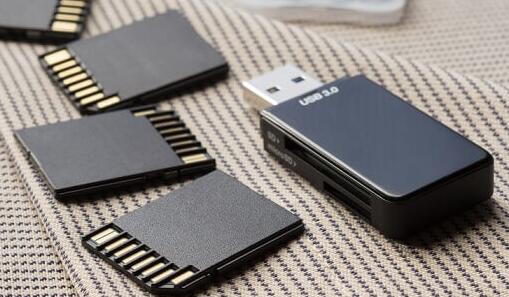SD cards are ubiquitous in modern technology, used in cameras, phones, drones, and other devices to store photos, videos, and critical data. However, they’re prone to damage whether from physical wear, corruption, or accidental formatting. Losing data can be devastating, but recovery is often possible with the right approach.
SD Card Damage
Before diving into recovery, it’s essential to understand the types of damage an SD card might suffer:
Physical Damage: Cracks, bent pins, or water exposure can render an SD card unreadable. Physical damage often requires specialized tools or professional intervention.
Logical Damage: File system corruption, accidental deletion, or improper ejection can disrupt data access without physically harming the card.

Wear and Tear: SD cards have a finite number of read/write cycles. Over time, memory cells degrade, leading to data loss.
Manufacturing Defects: Rarely, an SD card may fail due to inherent flaws, even with minimal use.
Identifying the type of damage helps determine the best recovery method. For instance, logical damage is often fixable with software, while physical damage might need hardware expertise.
Step 1: Assess the Situation
When your SD card fails, don’t panic—this can worsen the situation. Start by assessing the symptoms:
Is the card not recognized by your device or computer?
Are files missing or showing errors like “card not formatted”?
Is there visible physical damage (e.g., cracks or bent contacts)?
Important: Stop using the SD card immediately. Writing new data can overwrite existing files, making recovery harder or impossible. Remove the card from the device and proceed with diagnostics.
Step 2: Basic Troubleshooting
Sometimes, the issue isn’t the SD card itself but the device or connection. Try these quick fixes:
Test in Another Device: Insert the SD card into a different computer, camera, or card reader. If it works elsewhere, the original device may be at fault.
Clean the Contacts: Use a soft, dry cloth or a cotton swab with a tiny amount of isopropyl alcohol to gently clean the gold contacts. Dirt or oxidation can block connections.
Check the Card Reader: A faulty reader can mimic SD card failure. Test with a different reader or USB port.
If these don’t work, move to recovery methods.
Step 3: Software-Based Recovery for Logical Damage
While effective for logical data loss scenarios, Panda Assistant, like most software solutions, has limitations when it comes to severe physical damage. In such cases, professional hardware repair may be required. However, for situations involving overwritten data, timely use of the software maximizes recovery chances, as it can often retrieve files before new data fully replaces them. The trial version offers free scanning and previewing, though full recovery requires a subscription, with pricing options tailored to different user needs.
Step 4: Handling Physical Damage
If the SD card is physically damaged (e.g., snapped in half, waterlogged, or with broken contacts), software alone won’t suffice. Here’s what to do:
DIY Fixes (Low Risk)
Water Damage: If the card got wet, dry it thoroughly. Place it in a bag of uncooked rice or silica gel for 24-48 hours to absorb moisture. Test it afterward.
Bent Contacts: For slight bends, gently realign the metal contacts with a plastic tool (avoid metal to prevent short circuits). Test in a reader.
When to Stop DIY
If the card is cracked, chipped, or severely damaged, avoid further tampering. Physical repairs like soldering or reattaching chips require precision tools (e.g., microscopes, hot air stations) and risk permanent data loss if mishandled.
Professional Recovery
For severe physical damage, contact a data recovery service. These experts use cleanroom environments and specialized equipment to:
Repair broken connectors.
Extract NAND memory chips and read them directly.
Reconstruct data from fragmented memory.
Cost: Professional services range from $100 to $1.000+, depending on damage severity and data value. Companies like DriveSavers, Ontrack, or local specialists can provide quotes.
Step 5: Advanced Techniques for Tech Enthusiasts
If you’re comfortable with technical work, consider these methods:
Check Disk Utility (Windows):
Open “This PC,” right-click the SD card, and select “Properties > Tools > Check.” This can fix minor file system errors.
Use Command Line (Windows):
Run chkdsk X: /f (replace “X” with the SD card’s drive letter) to repair corruption.
Linux Tools:
Use fsck to repair the file system: sudo fsck /dev/sdX (replace “sdX” with your card’s identifier).
NAND Dumping: Requires hardware expertise—desolder the memory chip and use a NAND reader to extract raw data, then rebuild it with software like PC-3000.
These methods carry risks, so back up any progress and proceed cautiously.
Step 6: Preventing Future Data Loss
Once you’ve recovered your data (or if you couldn’t), take steps to avoid repeat issues:
Regular Backups: Copy files to a computer or cloud storage (e.g., Google Drive, Dropbox) after every use.
Safe Ejection: Always eject the SD card properly via your device or OS before removing it.
Quality Cards: Invest in reputable brands (SanDisk, Samsung, Lexar) with better durability.
Storage: Keep SD cards in protective cases, away from extreme heat, moisture, or magnets.
Common Scenarios and Solutions
“SD Card Not Formatted” Error: Use recovery software first, then format only if necessary.
Deleted Files: Software like Recuva or PhotoRec can retrieve them if not overwritten.
Corrupted Videos/Photos: Tools like Stellar Photo Recovery specialize in media repair.
About us and this blog
Panda Assistant is built on the latest data recovery algorithms, ensuring that no file is too damaged, too lost, or too corrupted to be recovered.
Request a free quote
We believe that data recovery shouldn’t be a daunting task. That’s why we’ve designed Panda Assistant to be as easy to use as it is powerful. With a few clicks, you can initiate a scan, preview recoverable files, and restore your data all within a matter of minutes.
Subscribe to our newsletter!
More from our blog
See all postsRecent Posts
- How to recover a deleted file from sharepoint? 2025-02-21
- How to recover a autocad file? 2025-02-21
- How to recover overwritten files? 2025-02-21










